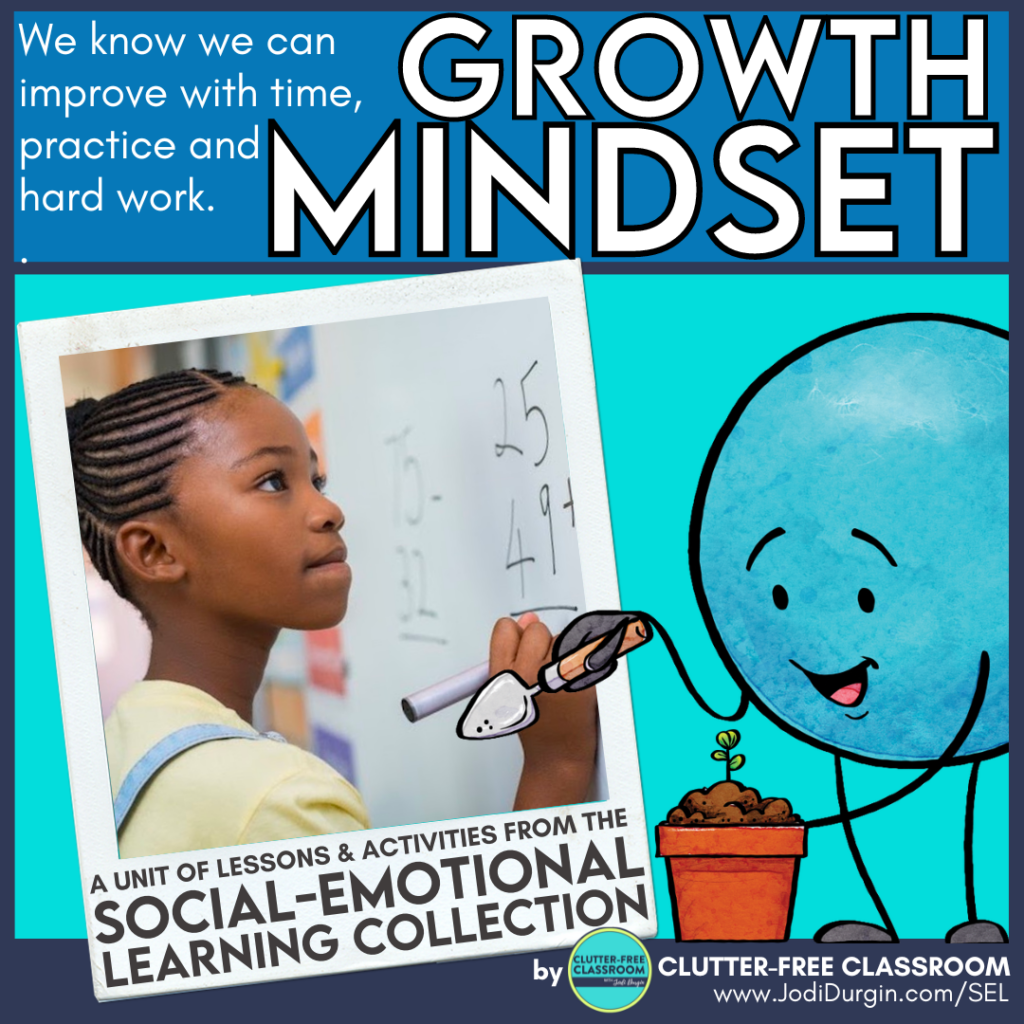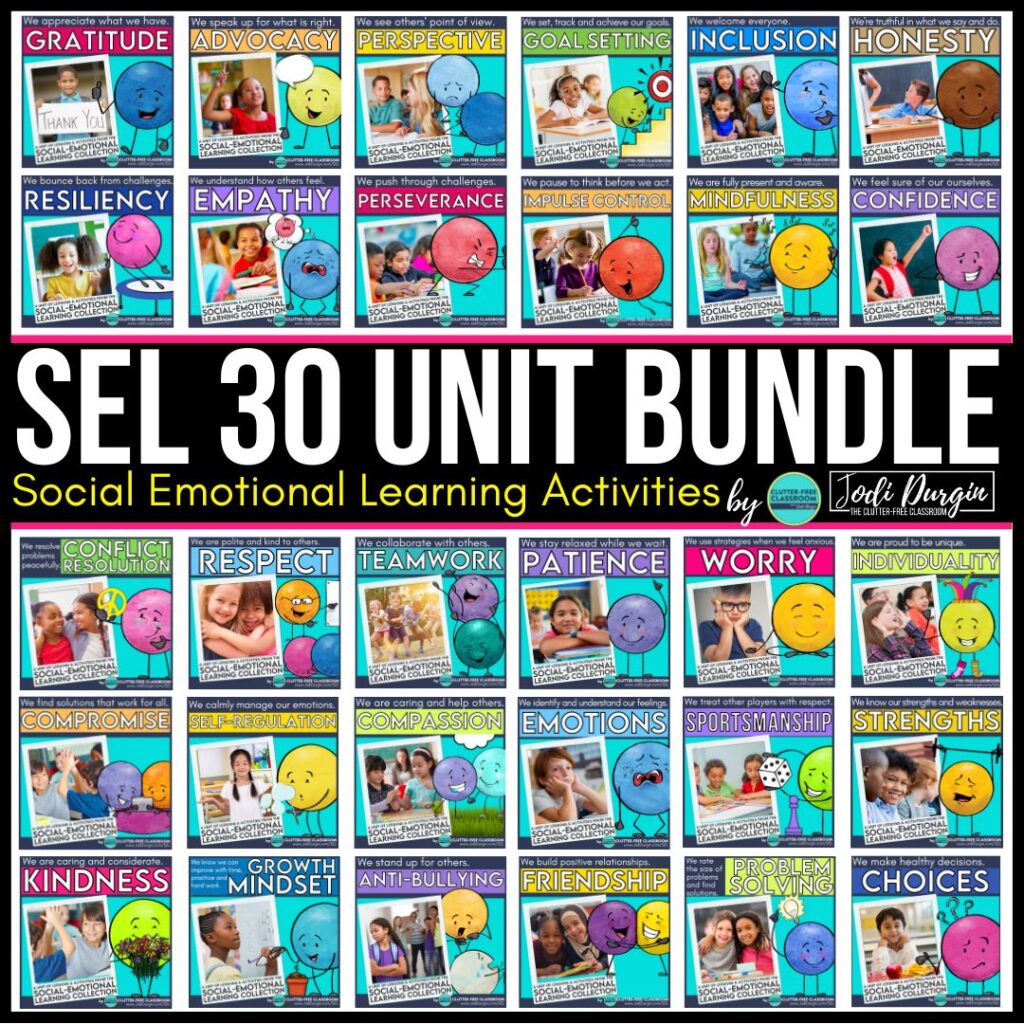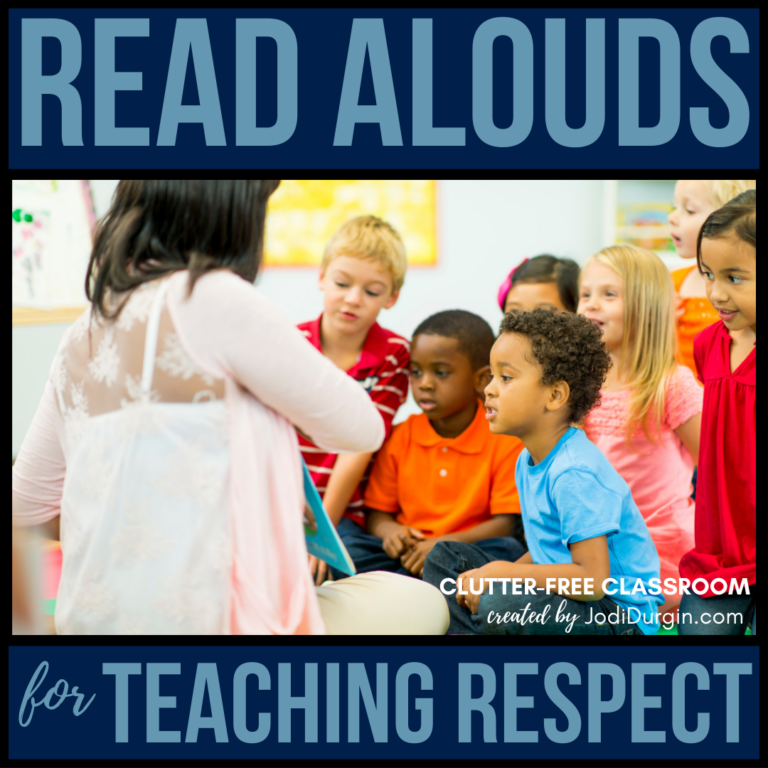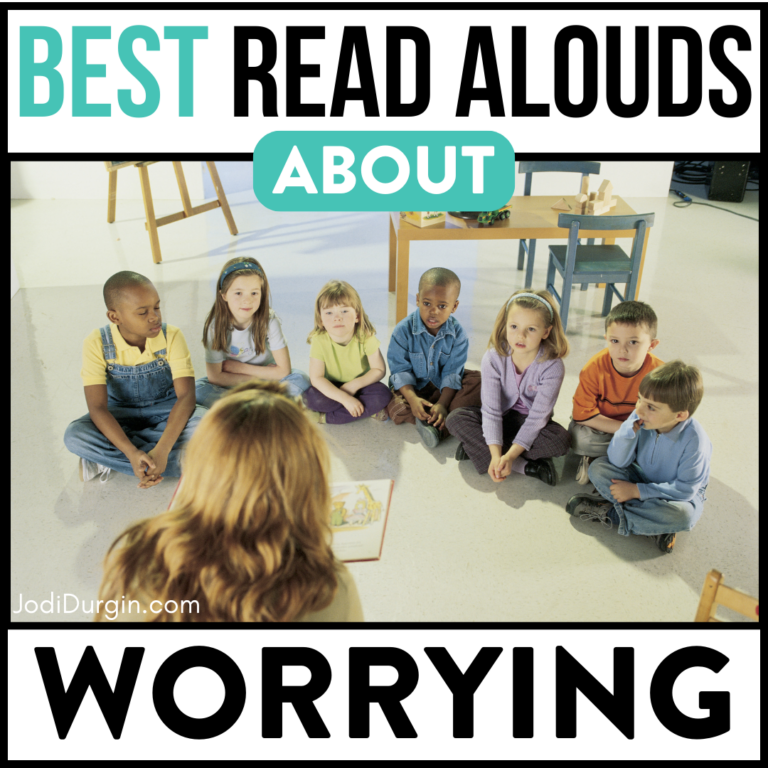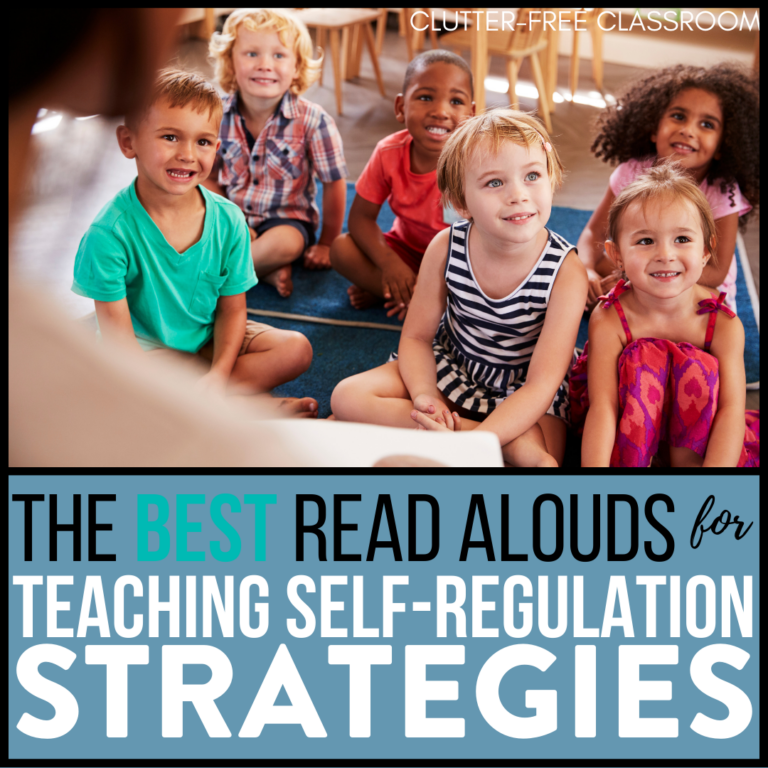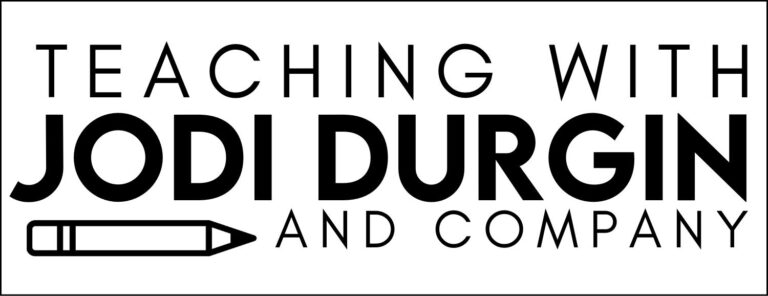If you are an elementary teacher looking to learn how to help your students use a growth mindset, then you found the right place! Having a growth mindset prepares kids to face challenges and persevere. Students who have a growth mindset are more independent than students who cannot. In this post, we’ll go into detail about what a growth mindset is and why it’s important. In addition, we’ll share tips and ideas for how to teach growth mindset skills in an elementary classroom setting. Read all about helping students use a growth mindset in and out of the classroom below!
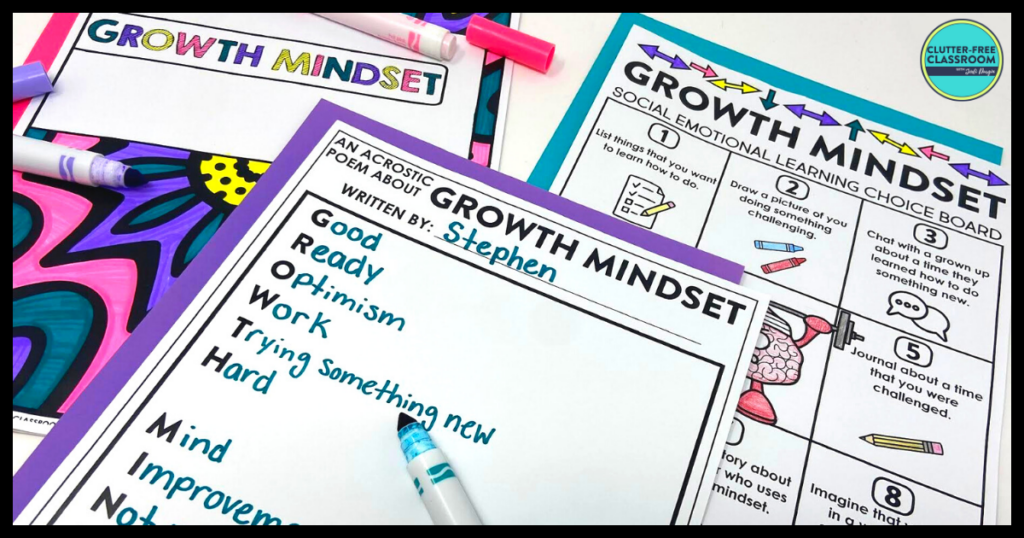
What Does Growth Mindset Mean?
Growth mindset is a person’s belief that intelligence can be developed through hard work. When learning about growth mindset it is important to understand the difference between a growth mindset and a fixed mindset. A fixed mindset is the belief that people are born with a certain amount of intelligence and that can’t be changed. You want your kids to have a growth mindset.
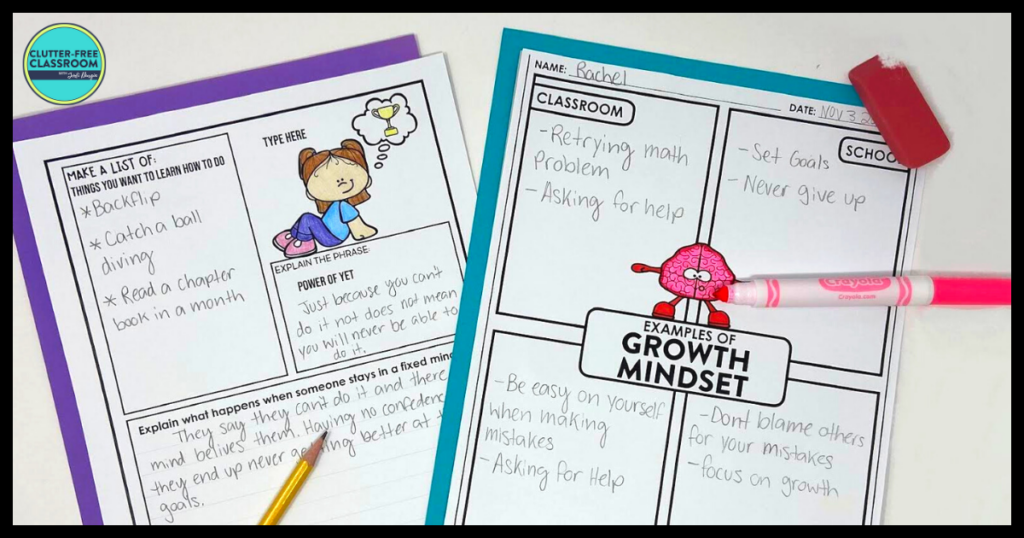
Why is it Important for Kids to Develop a Growth Mindset?
It is important for kids to develop a growth mindset because it causes students to understand the process of learning versus just being smart. It helps them face challenges and work hard at new learning. A kid with a fixed mindset would say “I can’t do this.” A kid with a growth mindset would say, “This is something new I am working on learning.”
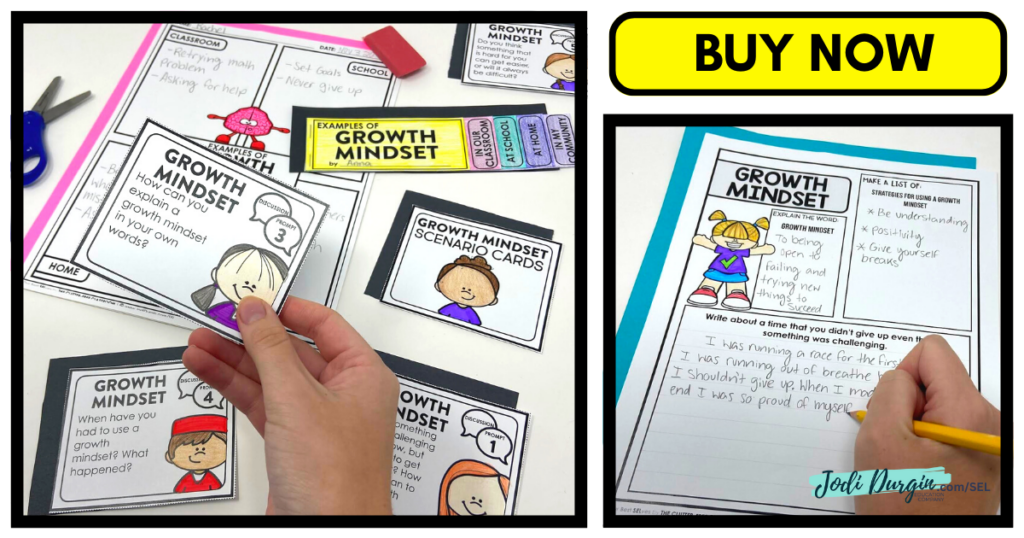
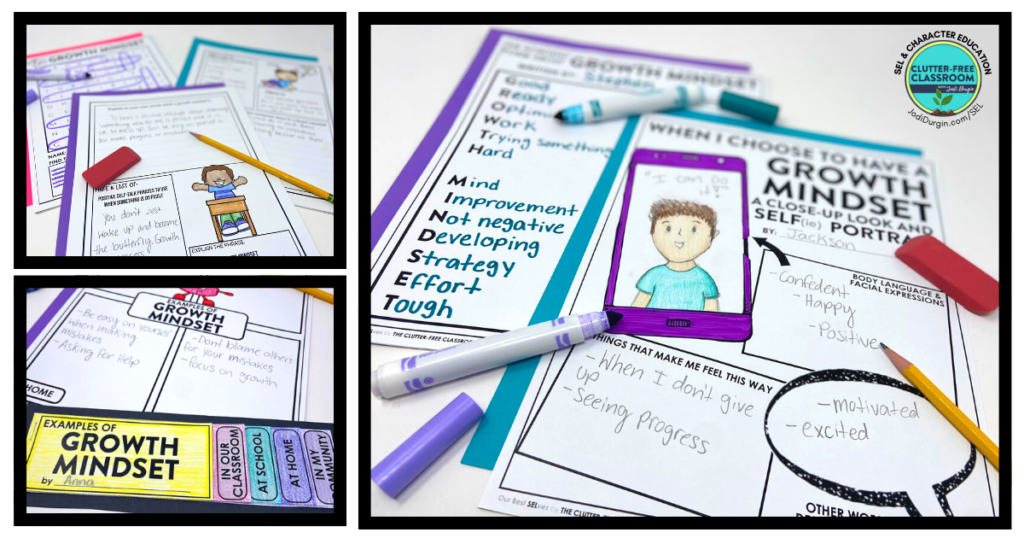
How Do I Know If I Need to Teach Growth Mindset in My Classroom?
The students in your 1st, 2nd, 3rd, 4th or 5th grade classroom would benefit from growth mindset lessons and activities if any of these statements are true:
- Students give up at the first sign of a struggle
- Students are reluctant to engage in activities that might be challenging
- They frequently say “I can’t do this” or “this is too hard for me”
- Students aren’t active in setting goals for themselves
- Students shy away from working hard
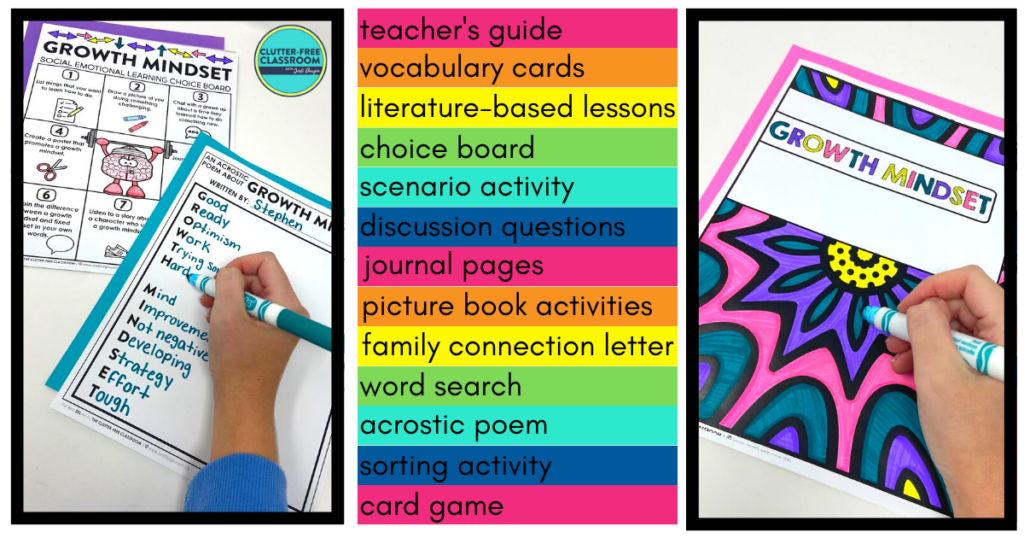
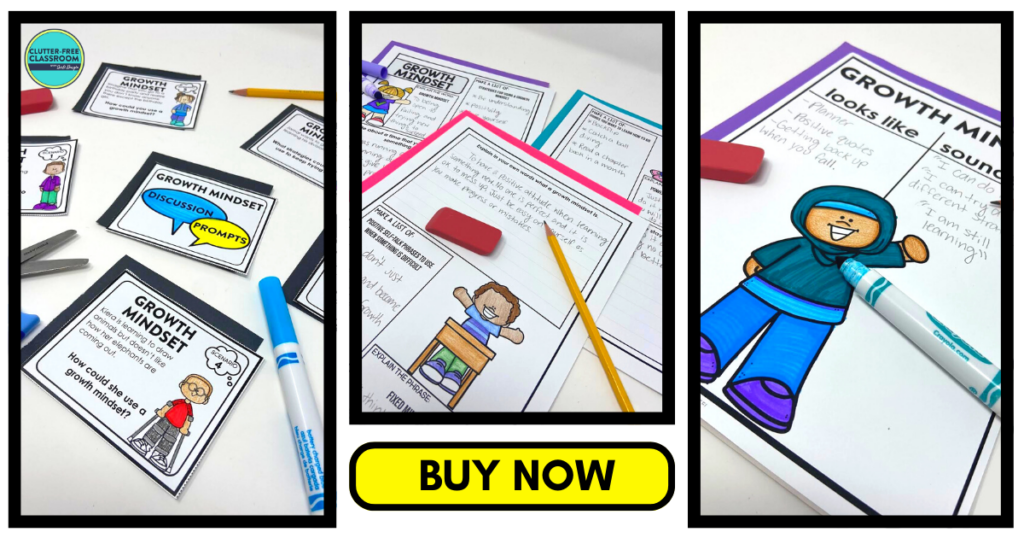
5 Reasons To Promote Growth Mindset In Your Elementary Classroom
Below are 5 reasons to promote a growth mindset in your elementary classroom.
1. Students will develop flexible thinking
Students with a growth mindset develop flexible thinking skills as they learn about a growth mindset. Having a growth mindset means that you believe you can get better at something through hard work. This helps students be flexible in understanding that how much they know about something is not fixed in time, but can grow.
2. Students will work harder
Students with a growth mindset will work harder. Instead of giving up at the first sign of struggle, they will use their positive and flexible thinking to persevere. Students without a growth mindset will give up at a challenge and say “I can’t do this” while a child with a growth mindset will say “what could I do differently” or “what will I try next time.”
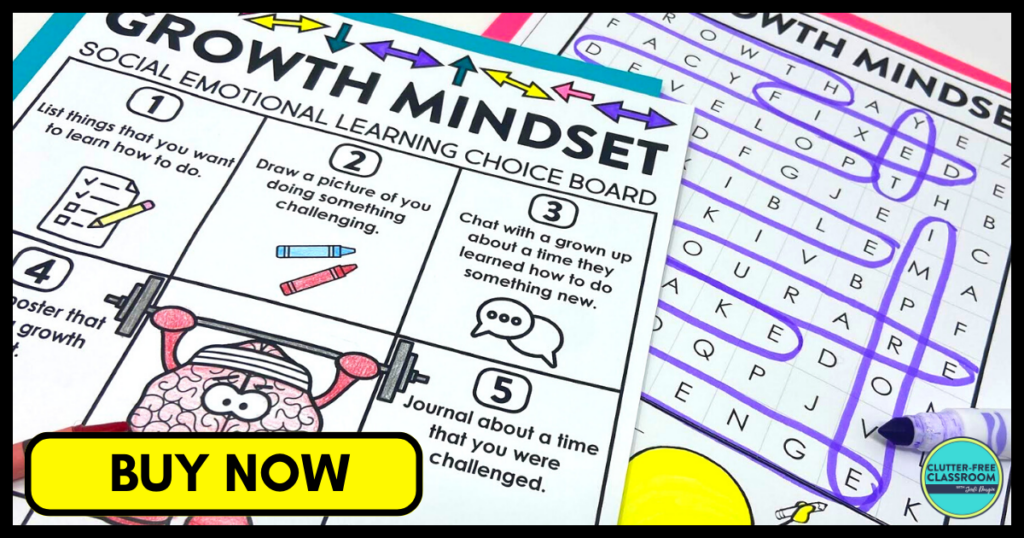
3. Students will demonstrate positive thinking
Using a growth mindset requires students to think more positively. They will use positive self-talk statements to rephrase what they would say with a fixed mindset. For example, “I can’t do this” can get rephrased into “I can’t do this yet.” Instead of “this is too hard” students could say “this is helping me grow.”
4. Students will develop confidence
Students with a growth mindset will become more confident because they will believe in themselves and their ability to learn and grow. Instead of thinking activities are too hard for them, they look at them as learning opportunities that they have the skills to get through.
5. Students will learn to seek approval from themselves
Students with a growth mindset learn to look for approval from themselves instead of seeking it from others. They will be reflective on their progress towards achieving tasks instead of going to adults or other children asking if they think they did a good job.
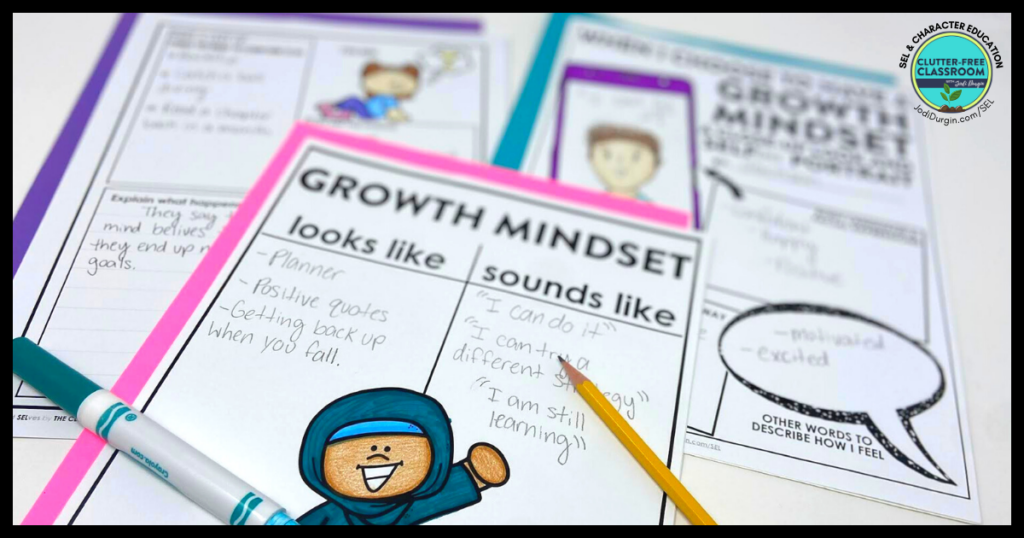
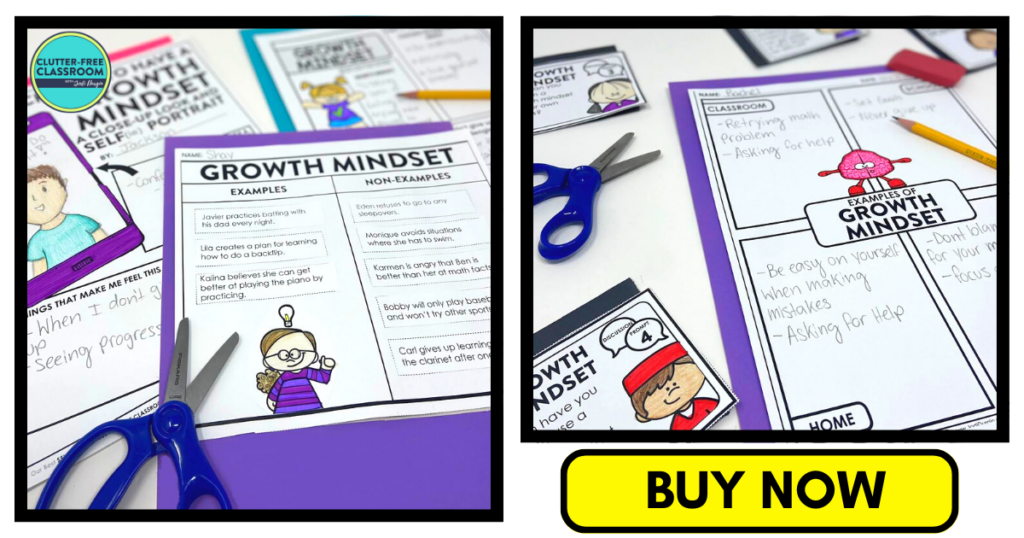
5 Tips and Ideas for Teaching Growth Mindset
Check out the tips and ideas for teaching growth mindset below!
1. Read Aloud Picture Books about Growth Mindset
Picture books are a great way to introduce and teach an SEL topic. It gets students thinking about the topic and activating their background knowledge. Check out this list of picture books for teaching growth mindset!
2. Watch Videos about Growth Mindset
There are tons of free online videos out there that promote social emotional learning. It’s a fun and engaging way to teach SEL skills that your students will enjoy. Check out these videos for teaching growth mindset!
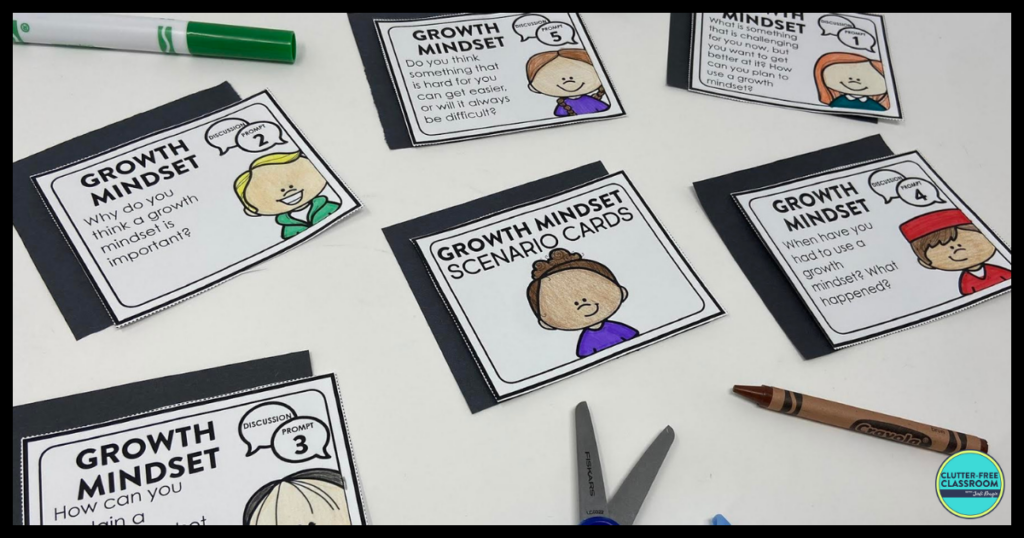
3. Explicitly Teach Vocabulary Related to Growth Mindset
Vocabulary words can help students develop understanding of growth mindset and create connections through related words. Our growth mindset SEL unit includes ten vocabulary cards with words related to the SEL topic. It is important for students to be able to see, hear, and use relevant vocabulary while learning. One idea for how to use them is to create an SEL word wall as students learn the words.
4. Provide Practice Opportunities
When learning any skill, students need time to practice. Social emotional learning skills are no different! Our growth mindset SEL unit includes scenario cards, discussion cards, choice boards, games, and much more. These provide students with opportunities to practice the skills independently, with partners or small groups, or as a whole class.
5. Integrate Other Content Areas
Integrating other content areas with this topic is a great way to approach this SEL topic. Our growth mindset SEL unit includes reading, writing, and art activities.
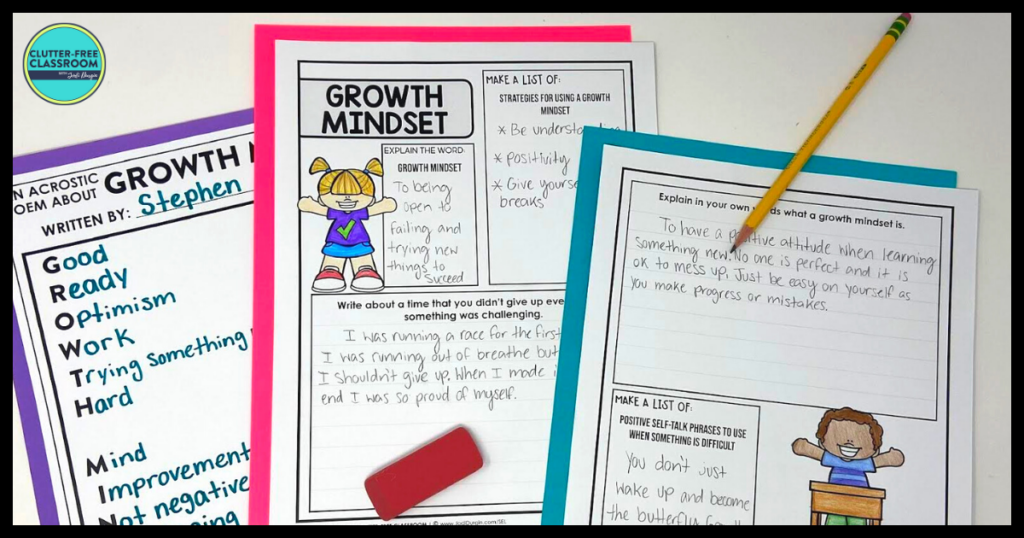
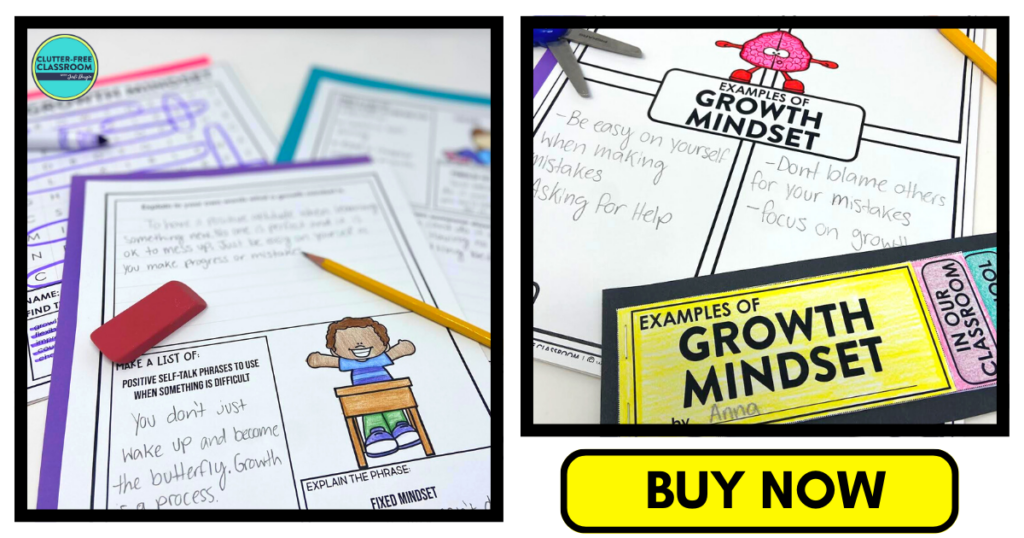
Skills Related to Growth Mindset
A growth mindset, in the context of social emotional learning (SEL) or character education, refers to the belief that intelligence, abilities, and qualities can be developed and improved through effort, practice, and resilience. While “growth mindset” is the commonly used term, there are other words and phrases that can convey a similar meaning. These alternative words highlight aspects of personal growth, learning, and a positive attitude towards development. Here are some other words used in the context of a growth mindset:
- Development mindset: Emphasizes the belief in personal development, improvement, and progress.
- Learning mindset: Fosters a positive attitude towards learning, embracing challenges, and seeking opportunities for growth.
- Incremental mindset: Recognizes the value of small steps, continuous improvement, and gradual progress.
- Adaptive mindset: Encourages flexibility, adaptability, and the willingness to learn from experiences and adjust accordingly.
- Possibility mindset: Embraces a mindset that focuses on possibilities, potential, and the belief that anything is achievable with effort.
- Resilient mindset: Cultivates the ability to bounce back from setbacks, learn from failures, and persist in the face of challenges.
- Open mindset: Embraces an open attitude towards new ideas, perspectives, and feedback to facilitate growth and development.
- Can-do mindset: Reflects a positive and determined attitude, believing in one’s ability to overcome obstacles and achieve goals.
- Growth-oriented mindset: Centers on the belief that growth and development are ongoing processes that can be nurtured and cultivated.
- Self-improvement mindset: Fosters a focus on personal growth, self-reflection, and continuous self-improvement.
These terms capture the essence of a growth mindset and encompass the qualities of embracing challenges, effort, and a positive attitude towards personal development and learning within the context of social emotional learning (SEL) or character education.
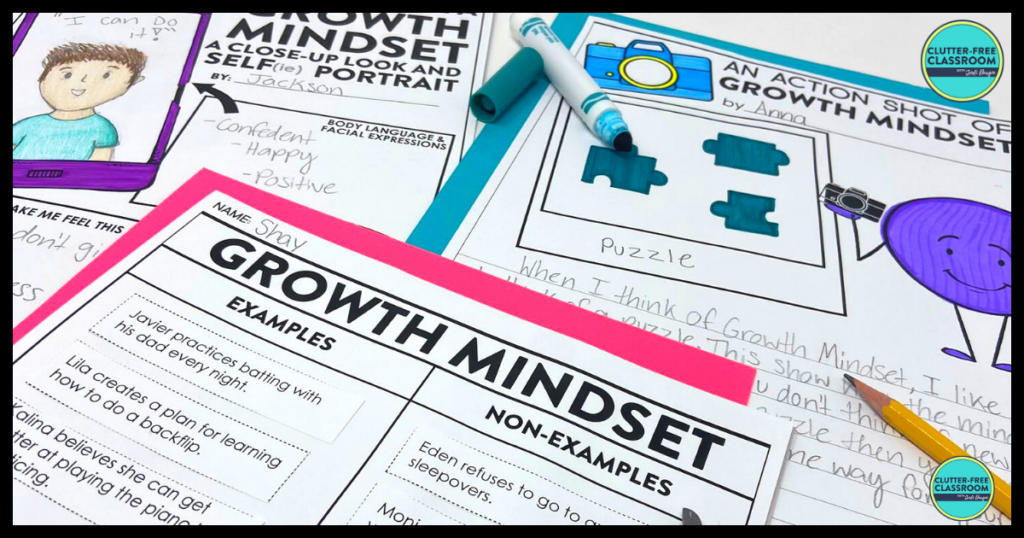
Download the SEL Activities
Click an image below to either get this individual growth mindset unit or get ALL 30 SEL units!
In closing, we hope you found this information about teaching growth mindset helpful! If you did, then you may also be interested in these posts.

